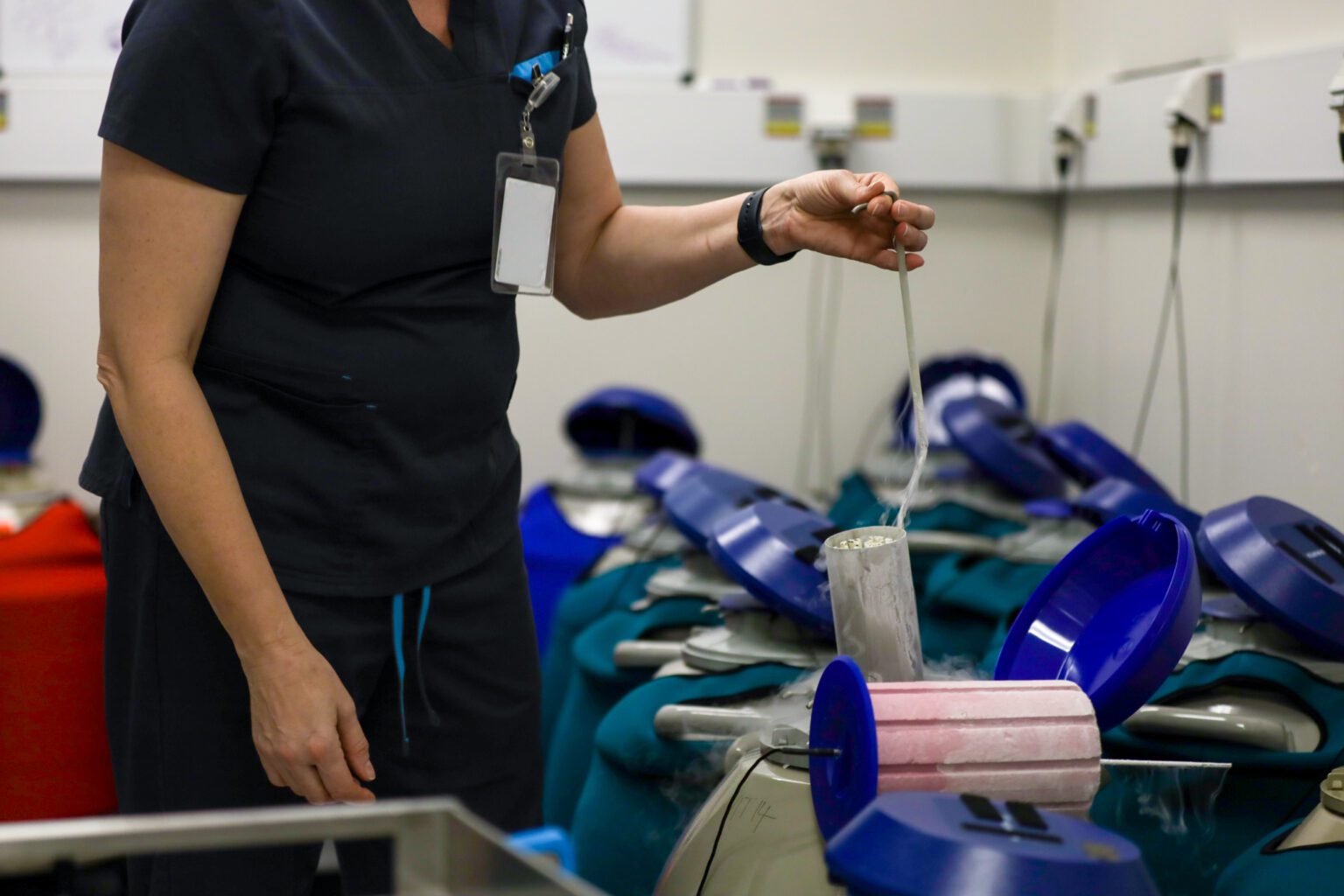Frozen vs. Fresh Embryo Transfer
A frozen embryo transfer (FET) is a process in which a previously frozen embryo, created during an earlier IVF cycle, is thawed and transferred into the uterus.
Many patients choose FET over a fresh embryo transfer because it offers several advantages. Freezing embryos allows time for genetic testing, which can help identify the healthiest embryos for transfer. It also reduces the risk of ovarian hyperstimulation syndrome (OHSS), a condition that can occur after the fertility medications used in egg retrieval. Additionally, frozen embryo transfers often result in higher pregnancy success rates because the body has time to recover from the stimulation phase of IVF, creating a more favorable uterine environment. For these reasons, FET has become a preferred option for many individuals and couples undergoing fertility treatment.

The Frozen Embryo Transfer Process

Initial Consultation & Planning
Your fertility specialist will review your medical history, discuss your IVF cycle, and create a personalized FET plan.

Preparing the Uterus
You’ll take hormone medications (estrogen and progesterone) to thicken the uterine lining, creating the ideal environment for implantation. Monitoring appointments with ultrasounds and blood tests ensure your body is responding properly.

Embryo Thawing
On the day of transfer, an embryologist carefully thaws your frozen embryo(s) using advanced techniques to preserve viability.

Embryo Transfer Procedure
A thin catheter is used to gently place the embryo into the uterus. The procedure is quick, painless, and does not require anesthesia.

The Two-Week Wait
After transfer, you’ll continue progesterone support while waiting to take a pregnancy test in about 10-14 days.

Pregnancy Test & Next Steps
A blood test confirms if implantation was successful. If positive, your care team will guide you through early pregnancy monitoring. If not, they will discuss next steps for future attempts.
Book Your Appointment Today
Schedule a ConsultationCurious about the Frozen Embryo Transfer Procedure?
Watch the video to learn how each step of the frozen embryo transfer process— from uterine preparation to embryo placement— helps increase your chances of success.
Common Frozen Embryo Transfer FAQs
The FET procedure is generally painless and similar to an IUI or pap smear. Most patients report only mild cramping, and the procedure typically takes 10-15 minutes.
FET cycles typically take about 4-6 weeks. This includes preparing the uterine lining with hormone treatments, the thawing process for embryos, and the actual embryo transfer.
FET has similar, if not higher, success rates than fresh embryo transfers, particularly because it allows for optimal uterine preparation. The success rate depends on factors like embryo quality, maternal age, and overall health. Your fertility specialist will discuss your chances based on your specific situation.
After the transfer, you’ll be monitored for a short period in the clinic. Then, you’ll go home and follow your doctor’s instructions for rest and medication. About 10-14 days later, you’ll take a pregnancy test to confirm if the transfer was successful.
FET is generally a safe procedure with minimal risks. However, as with any fertility treatment, there are some potential risks, such as implantation failure or the possibility of multiple pregnancies if more than one embryo is transferred. Your fertility team will monitor you closely and guide you through each step.




